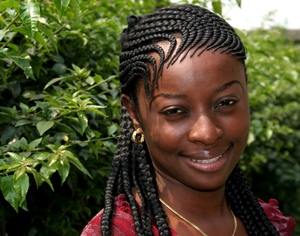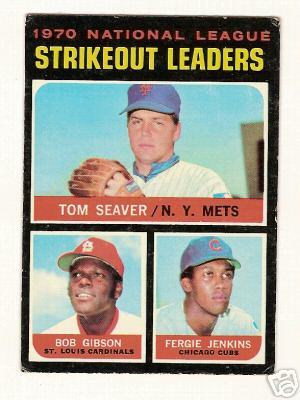Let the record show that there is no overnight secret to growing long African American hair. I know of no potions, lotions, creams, jellies, herbs, or pastes that will help black hair to grow at an exorbitant rate of speed. However, I have first hand knowledge of what it is like to go from a very short cropped bob (with significant damage) to a head full of hair that has reached nearly to the middle of my back. No two heads of hair are alike, especially in the African American community, where texture of hair has such a wide range. But I do know that if you consider some basic truths about the nature of black hair in general, you will understand how to achieve the hair-health you want.
Good Hair / Bad Hair
I really have issues with hearing black people coin wavy, or straight hair as “Good Hair.” In this society, too much emphasis has been placed on whether a black woman’s hair hangs naturally to her waist or not. Ask any cancer patient who has undergone extensive chemotherapy, and he/she will tell you that ANY hair is “good hair.”
Keeping that in mind, it should be mentioned that straight or long hair should not be considered better than hair that is naturally kinky or curly. Hair is simply an extension of our human bodies. Hair has no nerves, no “feeling”, and thus ought to be regarded as a “natural accessory.”
The Truth About Black Hair
African American hair is different from Caucasian hair in the following ways: 1) Black hair tends to dry out much more easily. 2) Black hair grows in coils instead of straight. And 3) The strands of black hair have less elasticity.
As a result of these three things, black women are known to relax their natural hair for both aesthetic and functional reasons. Some find that straighter hair is simply easier to manage. Some women are simply attracted to the look of longer hair, and thus relax their hair to enjoy its length. It is assumed that if you are looking to achieve significant length, more than likely you are using a hair relaxer of some sort. If such is the case, then you realize that chemicals of this nature are the biggest culprit in African American hair damage. It is important to note that many black women over-relax their hair, because they don’t want any signs of new growth. This is a huge mistake, because each time your relax your roots, some of the already straight hair comes into contact with the chemicals again, thus breaking down your hair further. This is why many women feel that their hair does not grow. However, it is very possible to cultivate a head of long hair, if that is your choice. But you’ll need to follow a few rudimentary guidelines…
Getting to the Root of It
First and foremost, you’ll need to take a long look at the head of hair you have. Visit a professional (or two) and have the health of your hair assessed. How much damage do you have? Are your split ends out of control? If you have been using relaxers for a long period of time, it is probable that the chemicals have created some amount of damage to the hair shaft.
You’ll want to cut off your split ends, and any damaged portions of your hair shaft. This is essential, as the hair will continue to split all the way up the shaft anyway, if not snipped off. Once this has been done, you’ll be able to see and feel exactly how much strong hair you’re left with. If, after all the cutting and snipping, you are devastated by what little remains, have no fear. Just move on to the next step, which is the nurturing process.
Make sure that your hair is clean and thoroughly conditioned. Black hair is typically in its best condition when it is washed and conditioned at least once a week (although some may have differing washing schedules.) Conditioning should be a deep, penetrating process. The point of doing so, is to retain as much moisture and elasticity in the hair shaft. Additionally, you’ll want to protect your hair against the stresses of styling.
The “Transition”
Now here’s the interesting part. In my case, I started out with a short, relaxed bob cut. Once I realized that I was damaging my hair with too much relaxing and heat styling, I began looking into natural styles like twists and braids. Through these styles, I realized that the key to growing long luxurious hair is to LEAVE IT ALONE.
There you have it. That is the secret. Ultimately, I settled on a style called “Tree Braids”, which essentially looks like a weave: the natural hair is corn rowed to the scalp, while long pieces of synthetic (or human) hair are interlocked into each row. The result is that you end up with a versatile, virtually maintenance-free hairstyle for about two months.
But here’s the tricky part. What happens to the relaxed hair underneath? First and foremost, one should never have her braided immediately after relaxing the hair. The hair shaft is still extremely sensitive, and the stress that braiding puts on the shaft could damage hair further. If your hair is relaxed, it is best to wait a few weeks for some new growth to emerge, and then condition thoroughly a few days before having the braids done. Depending upon the rate of speed with which your hair grows, you may want to have the edges of your Tree Braids touched up during this time, to keep your style looking fresh.
What Lies Beneath
You may think that wearing braids or other natural styles defeats the purpose of growing long hair. But it is actually the opposite. The months that your hair is in braids, consider the fact that outside of washing and moisturizing, your hair is completely free of damage. Once the braids are removed (and trust me, you’ll know when it’s time to have them redone), you will see that you have quite a bit of new growth.
At this point, wash-condition—and RE-BRAID. Do not relax the hair again in between. Make sure that you put extra emphasis on the conditioning part. While your hair is in the braids, it is unable to shed. You’ll want to wash all the dead hair out of your head so that you can start fresh with a new set of Tree Braids (or other kind of braided style.)
I repeated this process over the course of a year and a half. By the time I took my braids out for the last time, I had a huge wavy afro which was part natural, and part-permed. Obviously, the natural part of the hair was the strongest. It was at this point that I decided to relax again. And once my hair was relaxed, I could not believe that it had grown past my shoulders and down my back. I had not had hair that long since I was a child. Everyone marveled at my new locks, assuming that I had a weave.
Keeping the Look
Maintaining a healthy head of long, relaxed hair can be fairly difficult for African American women. You must remember that the things you do to your hair to make it look “manageable”, are often the things that damage it the most. Many black women believe that African American hair does not “grow.” But this simply is not true. Once you understand how your hair grows, it is easier to take care of.
The bottom line is that you must limit or eliminate heat and other styling options that dry out the hair. I have never ever dyed my hair, which I believe has helped me to keep it fairly healthy. If possible, don’t ever color your hair. There are all sorts of temporary coloring tactics (hair pieces, sprays, etc.) Ask your stylist about these options; they are cheaper and easier on your tresses.
Again, please note that this is NOT an overnight remedy. Growing long hair really means growing healthy hair. Whether or not you choose to relax your hair does not matter. But if you do, your hair will have more luster, better texture, and elasticity if you simply make the decision to stop hurting it with evil styling tools. In order for me to do so, I had to find alternate styling options that fit my lifestyle.




